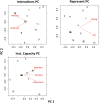Policy impacts of ecosystem services knowledge
- PMID: 26831101
- PMCID: PMC4763745
- DOI: 10.1073/pnas.1502452113
Policy impacts of ecosystem services knowledge
Abstract
Research about ecosystem services (ES) often aims to generate knowledge that influences policies and institutions for conservation and human development. However, we have limited understanding of how decision-makers use ES knowledge or what factors facilitate use. Here we address this gap and report on, to our knowledge, the first quantitative analysis of the factors and conditions that explain the policy impact of ES knowledge. We analyze a global sample of cases where similar ES knowledge was generated and applied to decision-making. We first test whether attributes of ES knowledge themselves predict different measures of impact on decisions. We find that legitimacy of knowledge is more often associated with impact than either the credibility or salience of the knowledge. We also examine whether predictor variables related to the science-to-policy process and the contextual conditions of a case are significant in predicting impact. Our findings indicate that, although many factors are important, attributes of the knowledge and aspects of the science-to-policy process that enhance legitimacy best explain the impact of ES science on decision-making. Our results are consistent with both theory and previous qualitative assessments in suggesting that the attributes and perceptions of scientific knowledge and process within which knowledge is coproduced are important determinants of whether that knowledge leads to action.
Keywords: boundary organizations; conservation; ecosystem services; knowledge systems; science policy interface.
Conflict of interest statement
The authors declare no conflict of interest.
Figures




References
-
- Daily GC, et al. Ecosystem services in decision making: Time to deliver. Front Ecol Environ. 2009;7(1):21–28.
-
- Hogan D, et al. Developing an Institutional Framework to Incorporate Ecosystem Services into Decision Making: Proceedings of a Workshop. U.S. Geological Survey; Reston, VA: 2011.
-
- de Groot RS, Alkemade R, Braat L, Hein L, Willemen L. Challenges in integrating the concept of ecosystem services and values in landscape planning, management and decision making. Ecol Complex. 2010;7(3):260–272.
-
- Laurans Y, Rankovic A, Billé R, Pirard R, Mermet L. Use of ecosystem services economic valuation for decision making: Questioning a literature blindspot. J Environ Manage. 2013;119:208–219. - PubMed
Publication types
MeSH terms
LinkOut - more resources
Full Text Sources
Other Literature Sources
Miscellaneous

